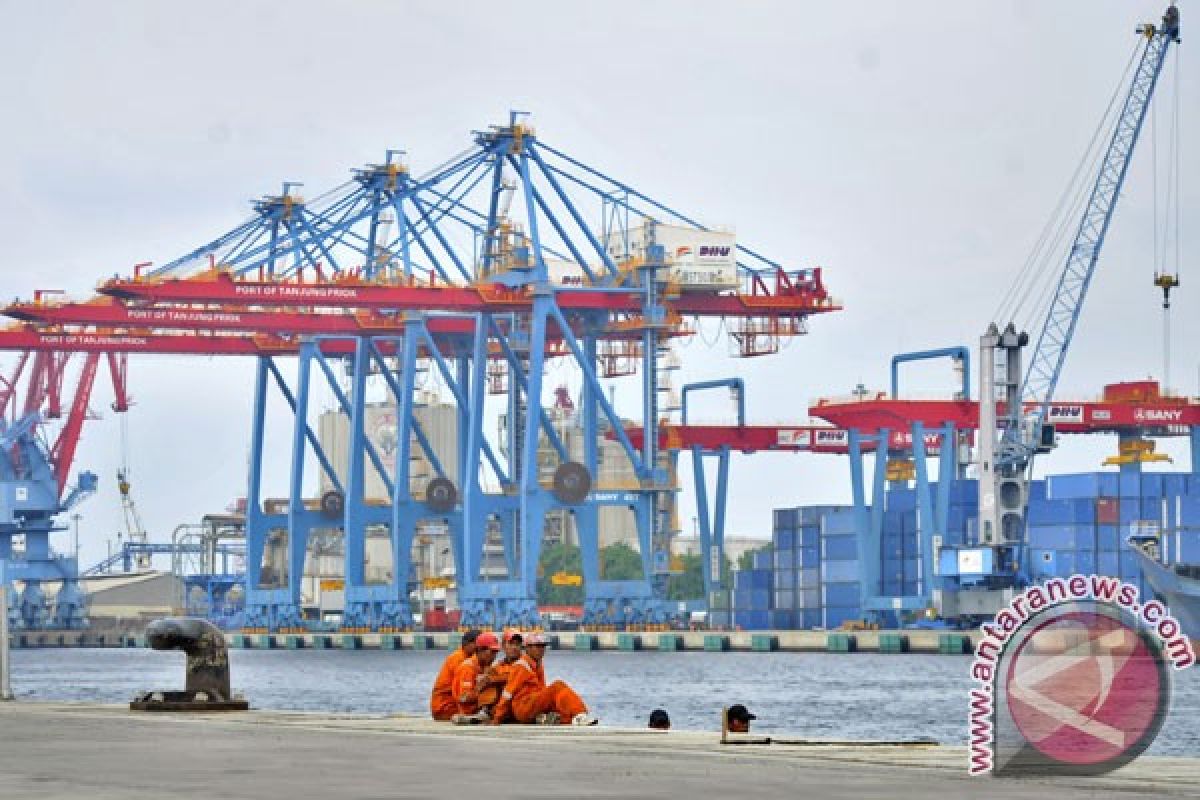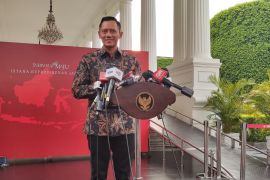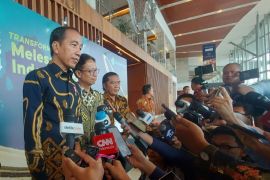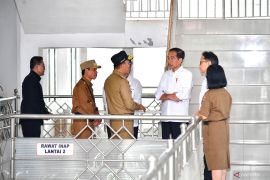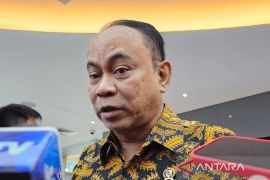This is a remarkable achievement."Jakarta (ANTARA News) - One of the factors hampering economic activities at Indonesian ports is the inordinately long time it takes for the imported goods to be released from the container terminals.
At Tanjung Priok Seaport of Jakarta, for example, the waiting time is around 8.9 days before the containers are released as clearance procedures are complicated.
Since the beginning of this year, the government of President Joko Widodo (Jokowi) had set a target to cut this waiting time to an average of 4.7 days only. This meant that while pre-customs processes would have to be completed in 2.7 days, customs processes will take half a day and post-customs handling will have to be cleared in a day and a half.
During an inspection of the Tanjung Priok Port in June, the President threatened to fire officials because he found them incapable of reducing loading and unloading time at ports. The waiting time was still 5.59 days.
"We must be frank. When I dont get answers for something I ask, I find them myself. It may be difficult but not impossible to dismiss the director general, or officials in the field, or even the minister," he said while visiting Jakartas Tanjung Priok Port on June 17.
Jokowi wanted port services to be quicker and more efficient. He was disappointed when he heard that waiting time at the port still stood at three days, 20 days or even 25 days.
The waiting time at Tanjung Priok Port, which represents all ports in Indonesia, was still 5.5 days last June, far from the target of 4.7 days set by the government.
By November, however, the government was successful to meet the target to eventually reduce the waiting time to 4.7 days and it is confident to meet that by the end of the year.
The Head of Tanjung Priok Port Authority, Bay M Hasani, had last Thursday (Dec 10) said that the target to reduce the waiting time, which was still 5.59 days as per last June figures, had been relatively achieved.
He said that the waiting period at the Tanjung Priok port, Jakarta, was now at 4.29 days, as of November 2015, an improvement on the national average target of 4.7 days.
Bay M Hasani said the waiting time efficiency could be achieved because of efficient pre-custom clearance, custom clearance and post-custom clearance processes. "This is a remarkable achievement," he added.
Bay explained that the process for pre-custom clearance at present was taking 2.3 days, down from 2.7 days, while custom clearance waiting time has been reduced from 0.5 days to 0.47 days, and post-process custom clearance now happens in 1.5 to 1.45 days.
He said the biggest improvement in waiting time efficiency was seen in the pre-custom clearance process where the time taken was reduced by 60 to 70 percent.
The Tanjung Priok Port Authority head added that the determining factor for pre-custom clearance, among others, was the considerable number of bans or restrictions imposed, the speed at which government agencies outside the port issue bans, the lengthy research on prohibition by the Indonesia National Single Window (INSW) and the awareness among importers of the need to immediately submit the imported goods filing document.
Bay explained that as part of the efforts to reduce the waiting time, supporting facilities have been set up to address any bottlenecks in export and import licensing process.
In addition, the ministerial regulation had been revised for removing overdue stacked goods at the port within a period of three days now, down from the seven day period available earlier.
"This effort would stimulate the speed of goods traffic from the port lines and will help review the tariff system regarding storage at port services," he said.
There was also a plan to build an integrated IT-based port monitoring system, which is used to trace the movement of ships and goods at the port. Integrated quarantine and customs checkpoints need optimization.
The success of the government in reducing the waiting time of containers at ports to the target level, or even speedier than the target, was acknowledged by the head of the Capital Investment Coordinating Board (BKPM), Franky Sibarani.
He said the government would achieve its target to reduce the dwelling time in December 2015. "Now the waiting time has been reduced to 4.3 days. And beginning today, we will provide a green carpet treatment to the investors, not a red carpet because their imported goods will directly pass through the green lane, not the red lane," he said.
The Directorate General of Customs and Excise is offering the green lane for investors whose projects are entering the construction phase in order to boost economic development.
The green lane facility is to facilitate investors for importing machinery and tools as they enter the construction phase. It will reduce the time spent at ports, Customs and Excise Director General Haru Pambudi said.
The green lane facility to speed up the clearance process for imported machines and tools will be given to investors entering the construction phase of their projects upon the recommendation of the Capital Investment Coordinating Board (BKPM).
"Besides making procedures easy for the investors, the green lane facility will also cut short the waiting time," the director general told a press conference explaining the facility here on Monday.
According to Heru Pambudi, companies reaching the construction phase of their projects were most certain to import capital goods involving huge amounts.
"If all of these have to pass through the red lane, they will end up taking a lot of time before being cleared," the director general said.
For this purpose, the BKPM is recommending 48 companies for the green lane facility from the directorate general of costumes and excise.
BKMP head Franky said his office had verified the 48 companies whose projects had entered the construction phase across the country.
Of these companies, 39 are foreign investment firms (PMA) and nine others are domestic investment corporations (PMDN) with a combined investment realization of Rp35 trillion of the total investment commitment of Rp127.7 trillion.
These companies are scattered across the country and employ 39,219 workers. They are doing business in sectors such as basic metal industry, metal industry, machines, electronics, food industry, electricity, gas, water, basic chemical industry, chemical goods, pharmacies, rubber industry, rubber-based products and plastic goods.
The other sectors included housing; office and industrial areas; transportation equipment and other transportation devices; transportation, warehousing and telecommunications; textile industry; hotel and restaurants; animal husbandry; paper industry and paper-based products and printing.
"We will communicate with these companies so that they can complete the required documents," Franky said.
(T.A014/INE/KR-BSR/S012)
Reporter: Andi Abdussalam
Editor: Priyambodo RH
Copyright © ANTARA 2015
